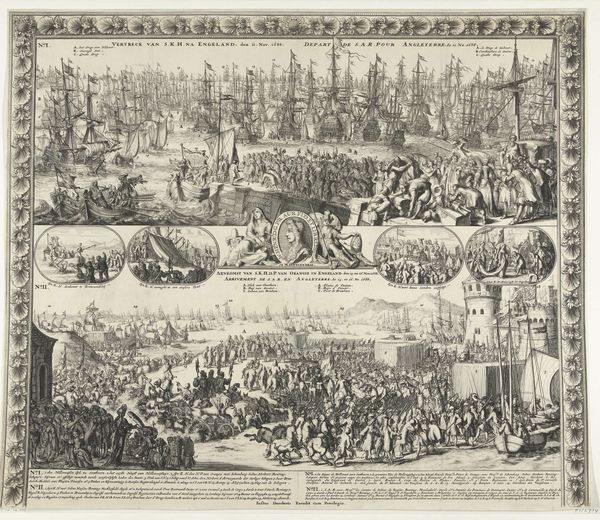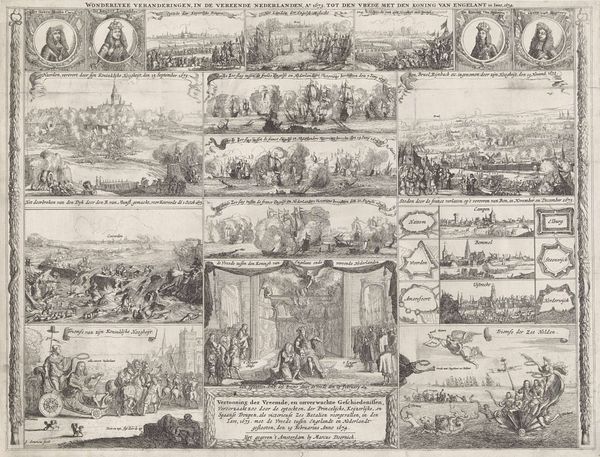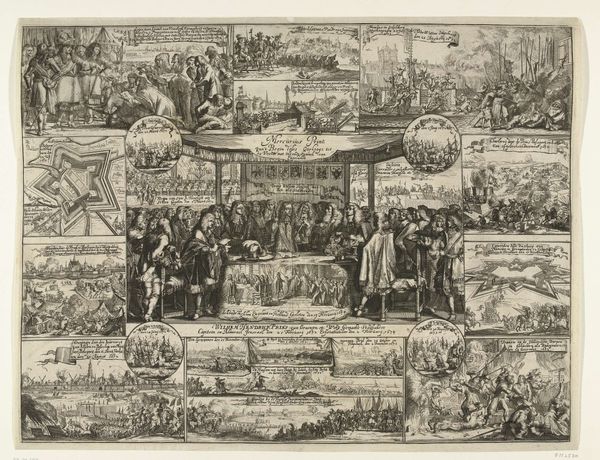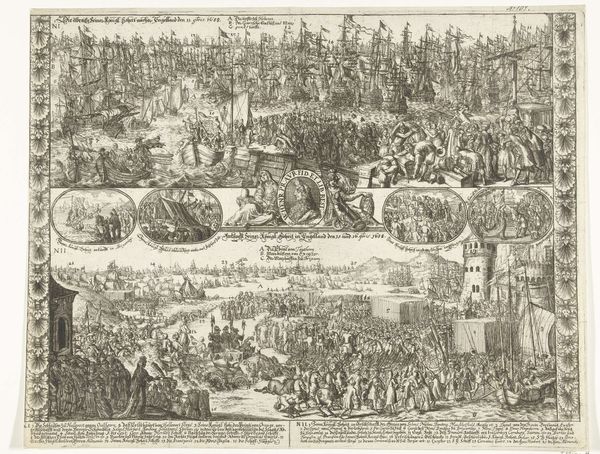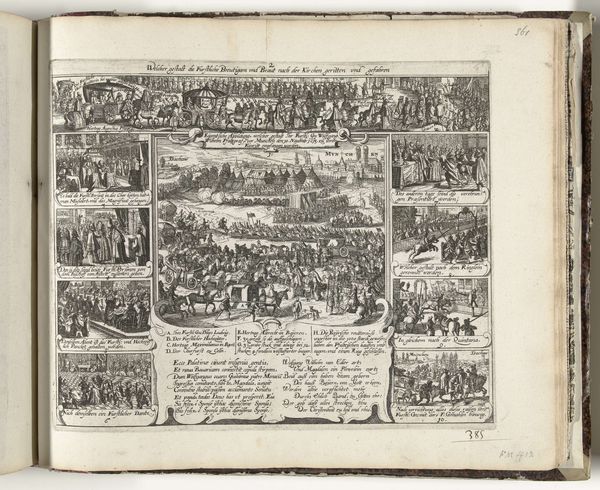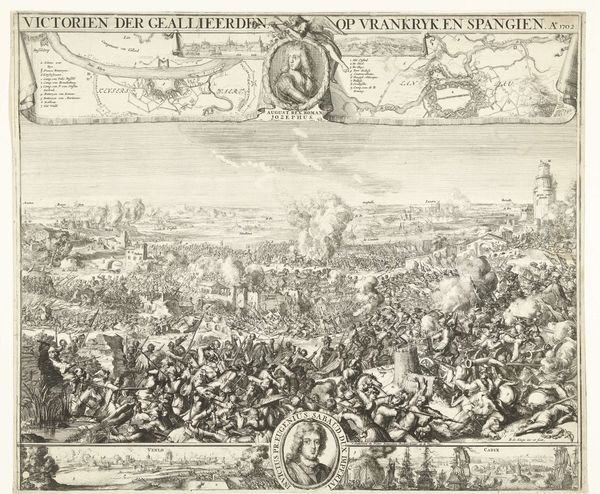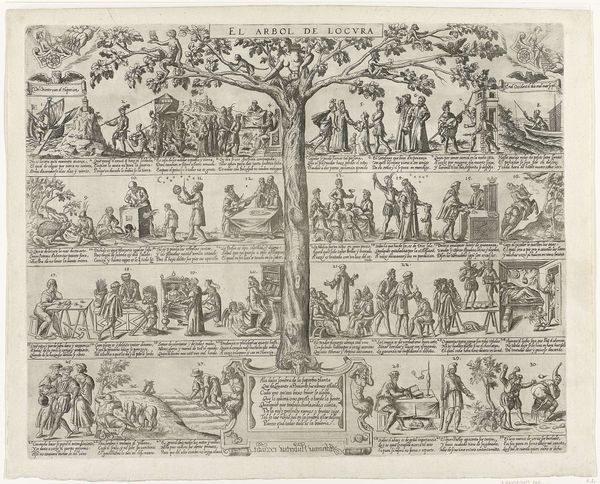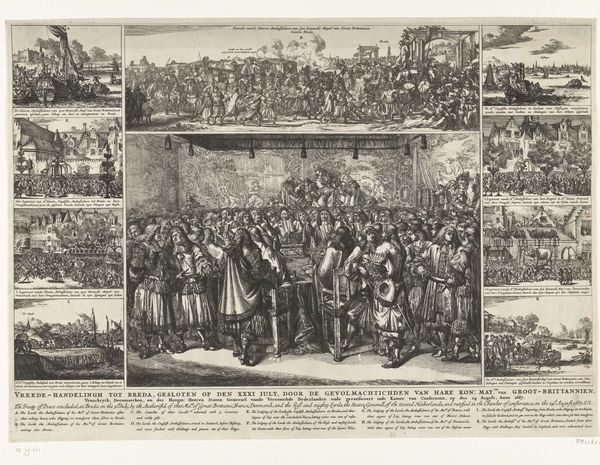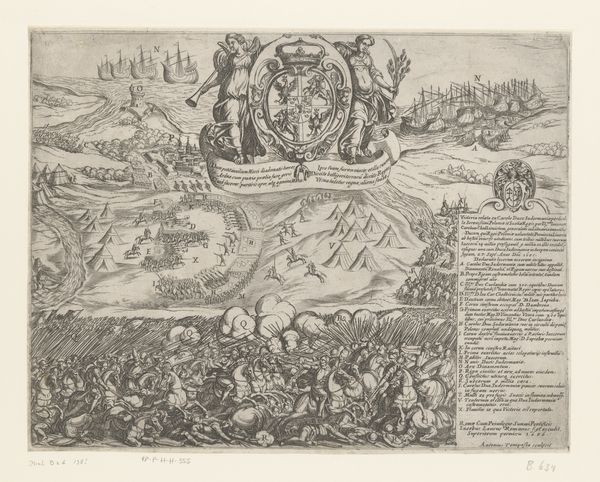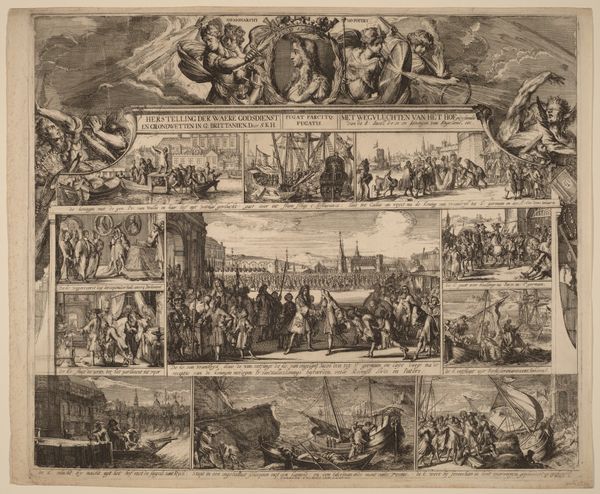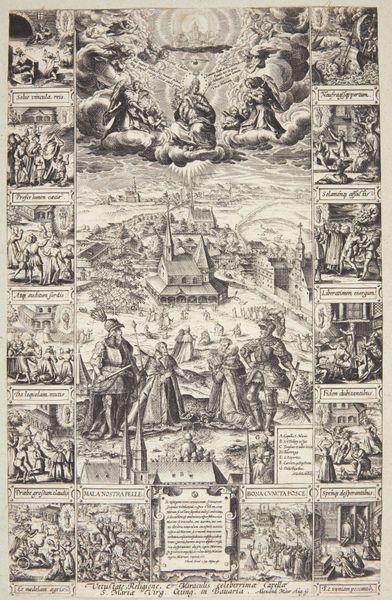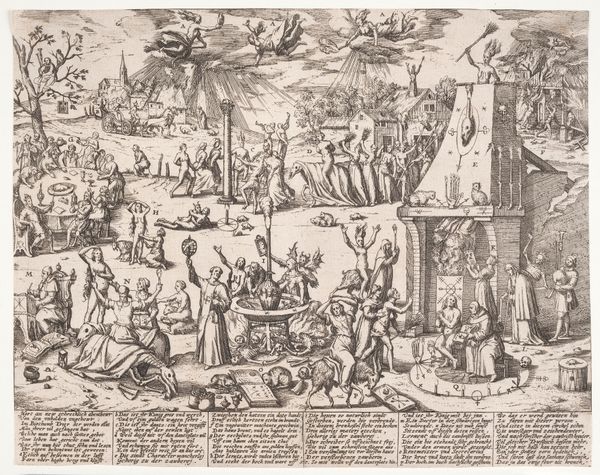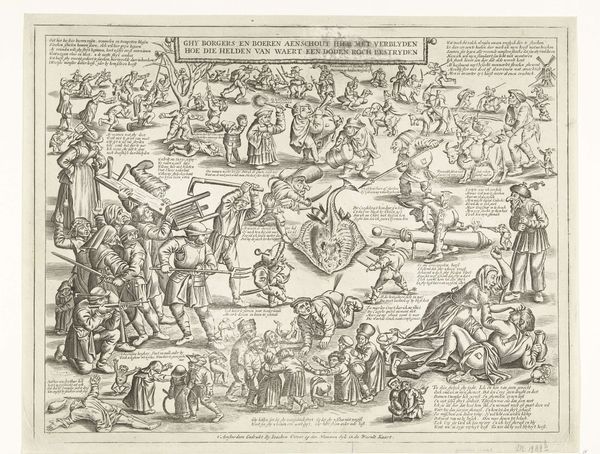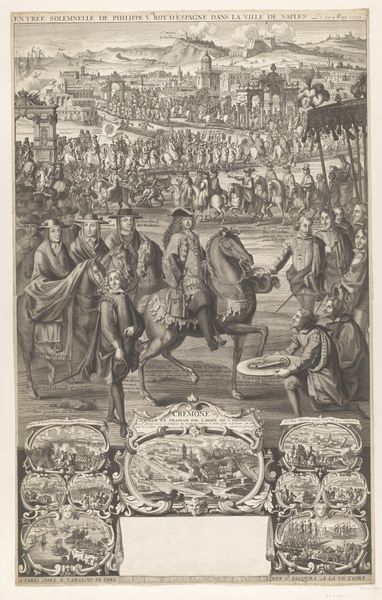
Allegorie ter ere van Willem III bij zijn komst naar Engeland, 1688 1688 - 1689
0:00
0:00
print, engraving
#
allegory
#
baroque
# print
#
old engraving style
#
cityscape
#
history-painting
#
engraving
Dimensions: height 505 mm, width 588 mm
Copyright: Rijks Museum: Open Domain
Curator: The overwhelming detail suggests a rich historical moment. It has a very Baroque flavor. Editor: Indeed. We're looking at an engraving by Romeyn de Hooghe, created between 1688 and 1689, titled "Allegory in Honor of William III's Arrival in England." The Rijksmuseum is its current home. What stands out to you from a formal perspective? Curator: Its intricate composition. See how De Hooghe compartmentalizes the narrative through vignettes arranged around a central scene and text. The circular composition creates dynamic tension while the heraldry and text establish context. Editor: The materials, the labor... producing these engravings required skilled craftsmanship and access to printing presses. The dissemination of such images played a crucial role in shaping public perception, particularly around political events like William's ascension. The sheer volume suggests significant societal interest. Curator: Absolutely, its detailed depiction serves a specific purpose, wouldn't you agree? Note how perspective is deployed for the overall effect rather than any devotion to realistic dimensions or proportions? Editor: I find the inclusion of an almanac at the bottom rather fascinating. It transforms the print into a functional object, further embedding political messaging within the everyday lives of its intended audience. What labor went into creating and distributing this useful, if biased, calendar? Curator: Yes, a successful synthesis of propaganda and practicality, one might say. Its rigid organization into different panels guides the viewer's interpretation of its subject matter through its compositional structure. The vignettes, acting almost as captions, help with symbolic unpacking. Editor: De Hooghe’s technique involved precise manipulation of metal, acid, and ink to disseminate an allegorical and highly mediated account of William III’s arrival. Think of the workshop dynamics involved, the collaboration, the training of artisans needed for such exacting work. It emphasizes the means of production as key to its power. Curator: A convergence of art, function, and sociopolitical power—intriguing. I now consider the power this style has to evoke and communicate complex messages. Editor: Indeed, it's an intersection where materials meet political agendas, and artisanal skill shapes historical narrative.
Comments
No comments
Be the first to comment and join the conversation on the ultimate creative platform.
